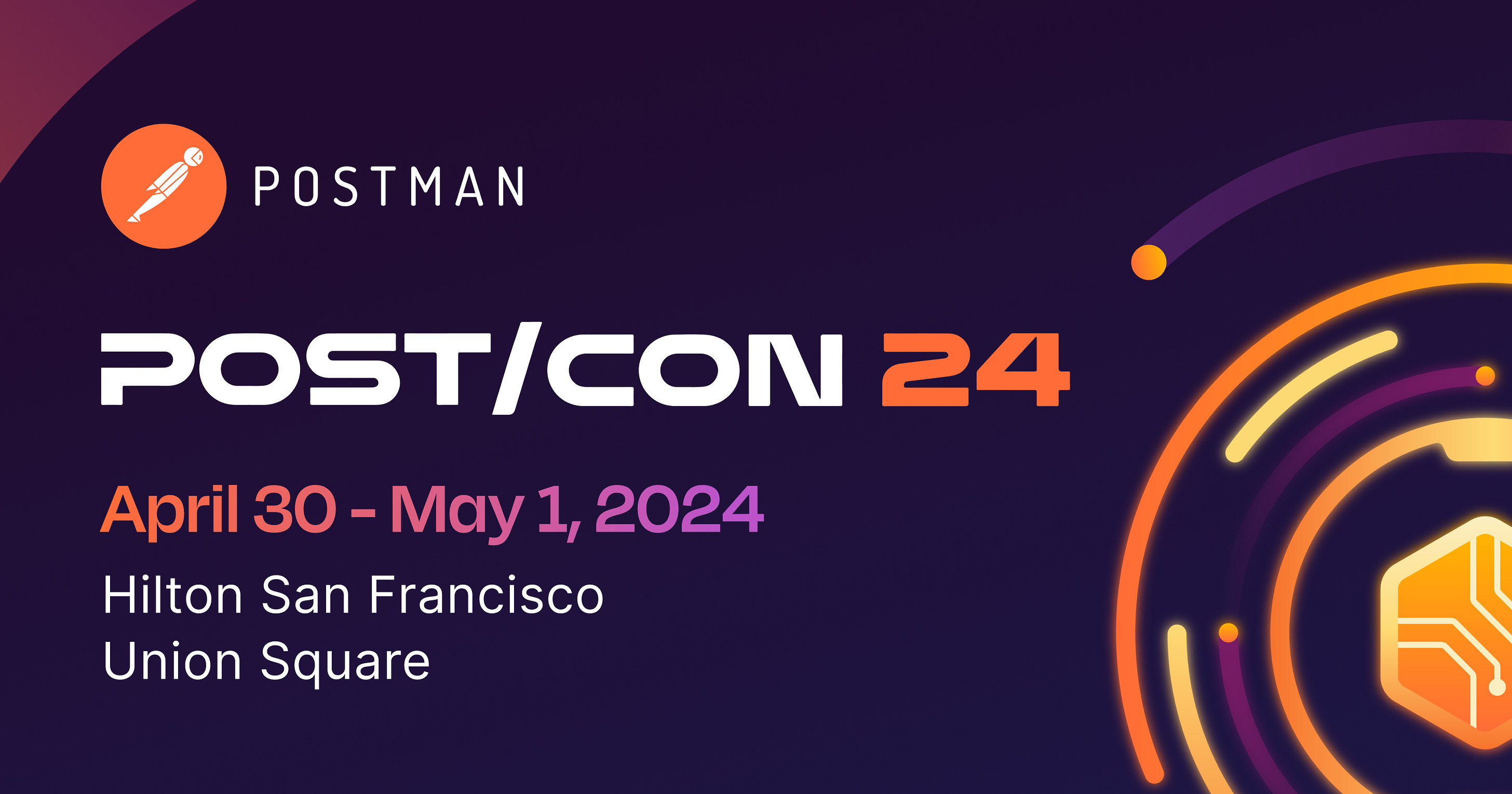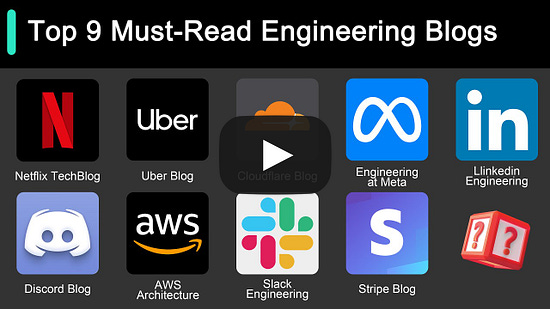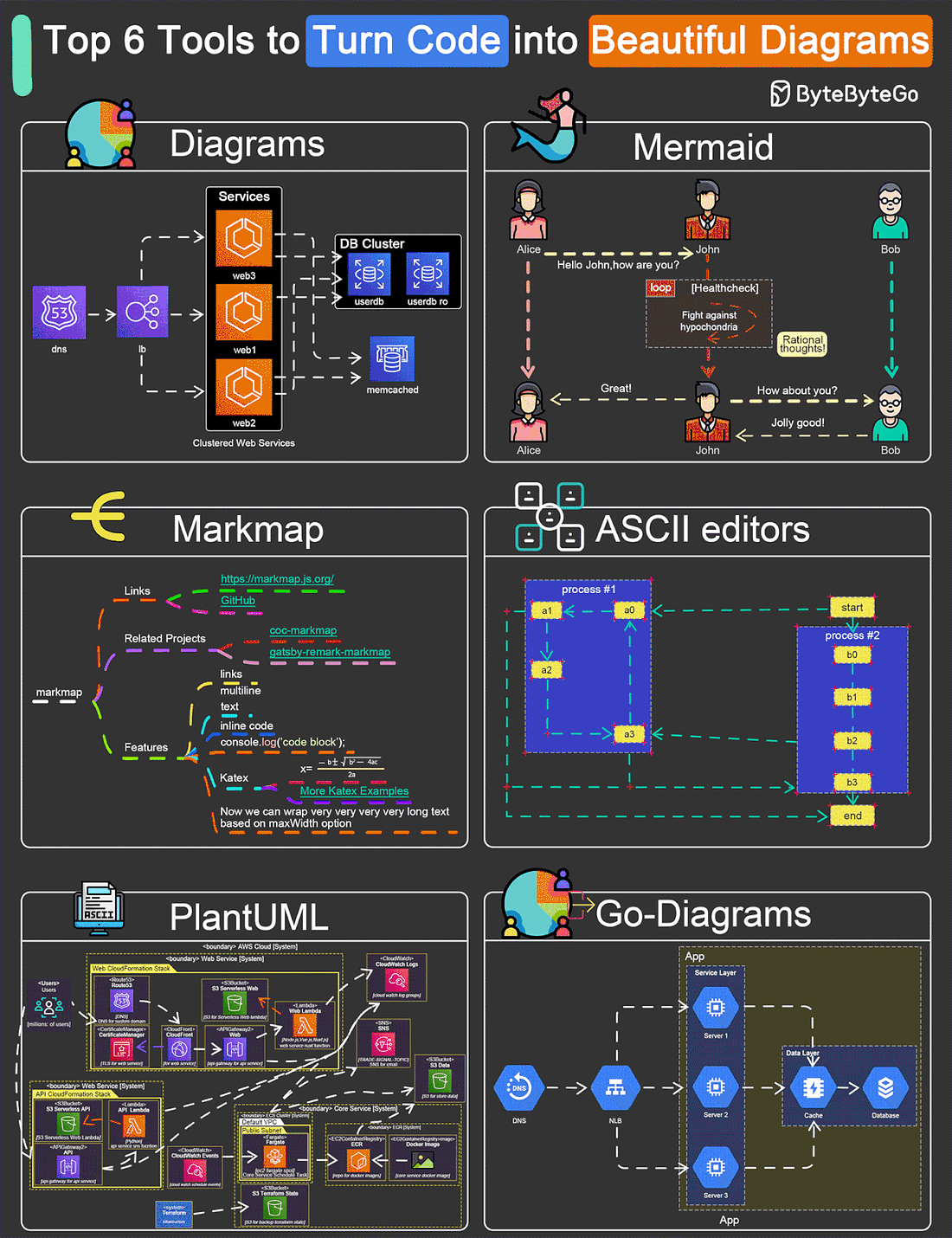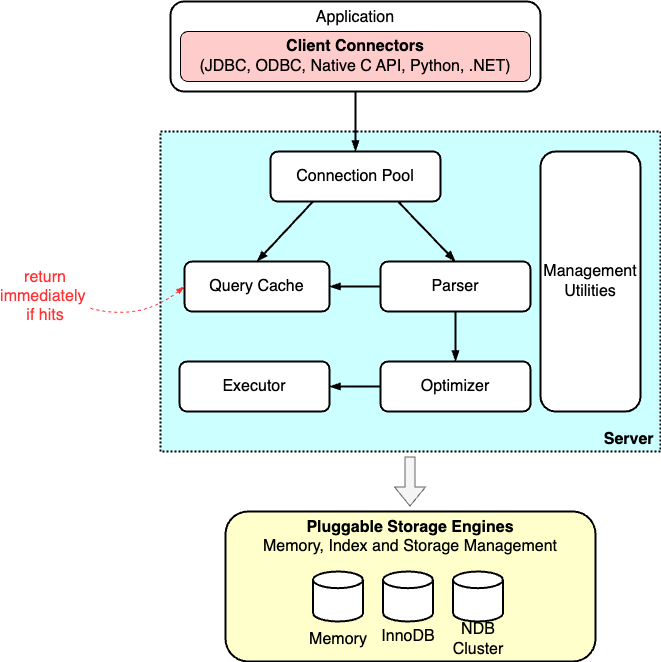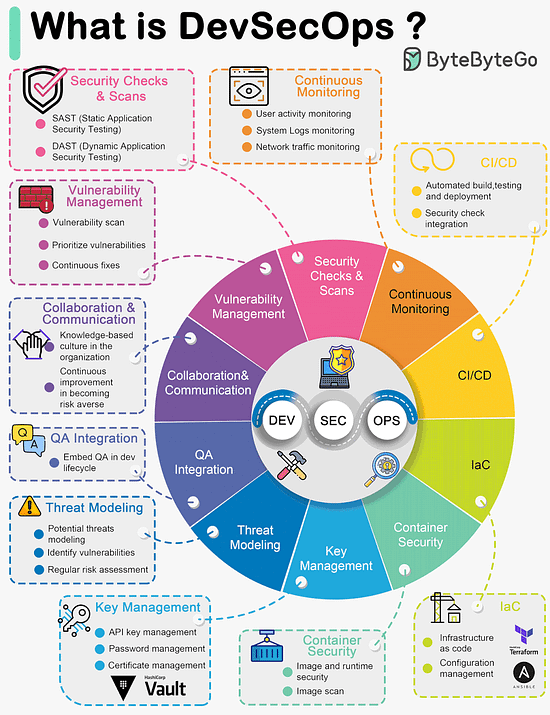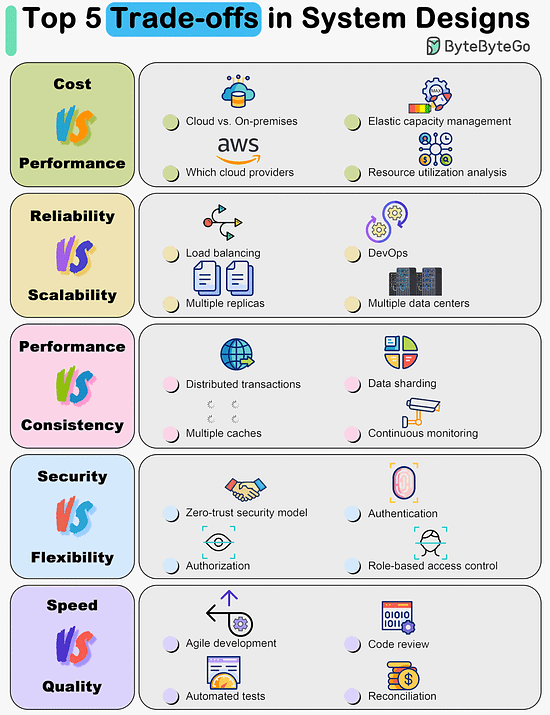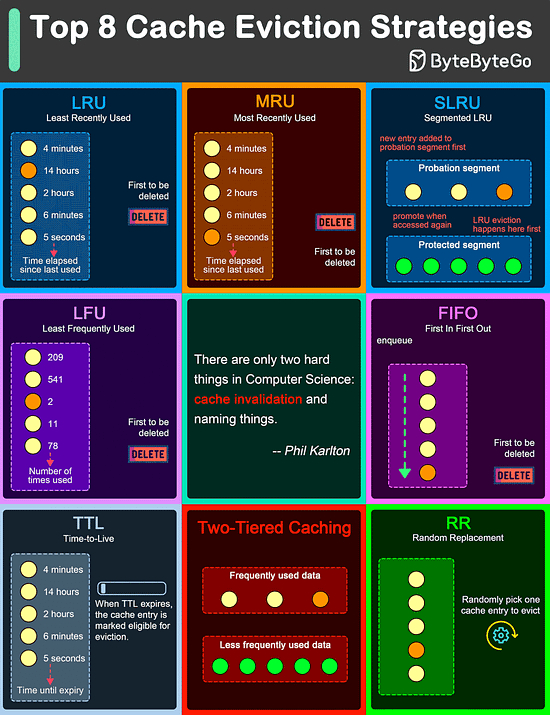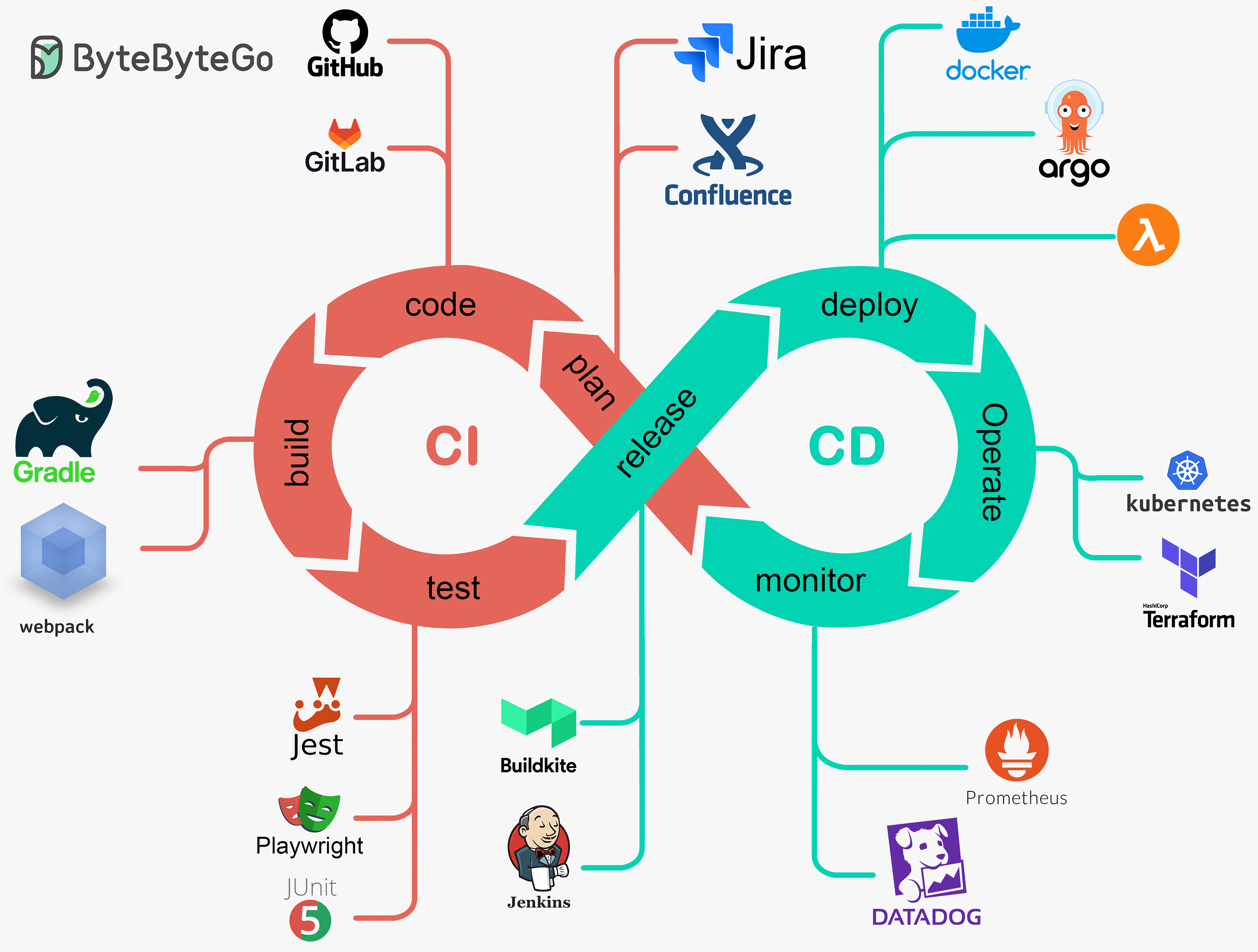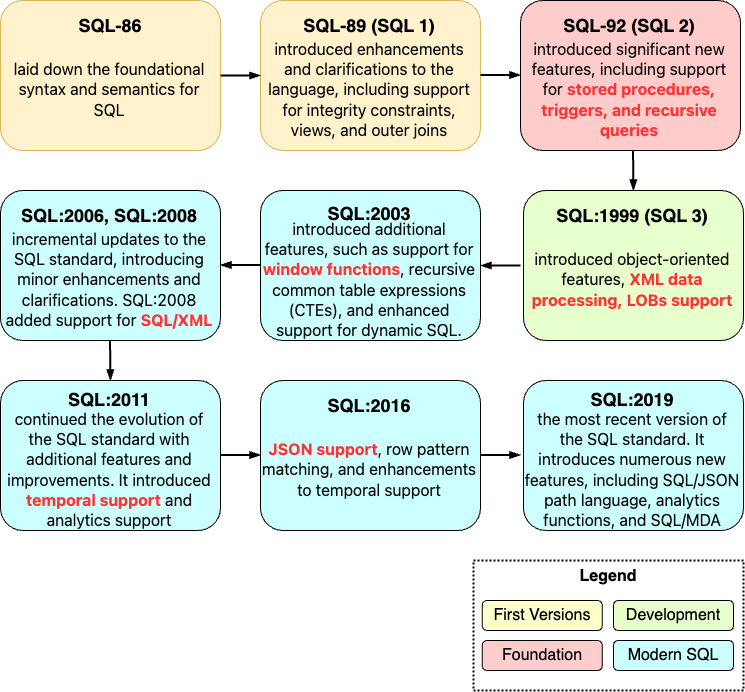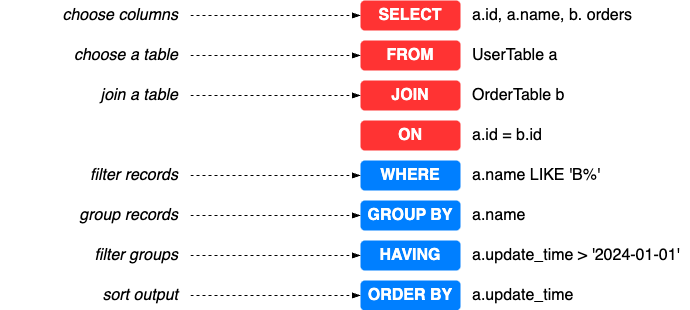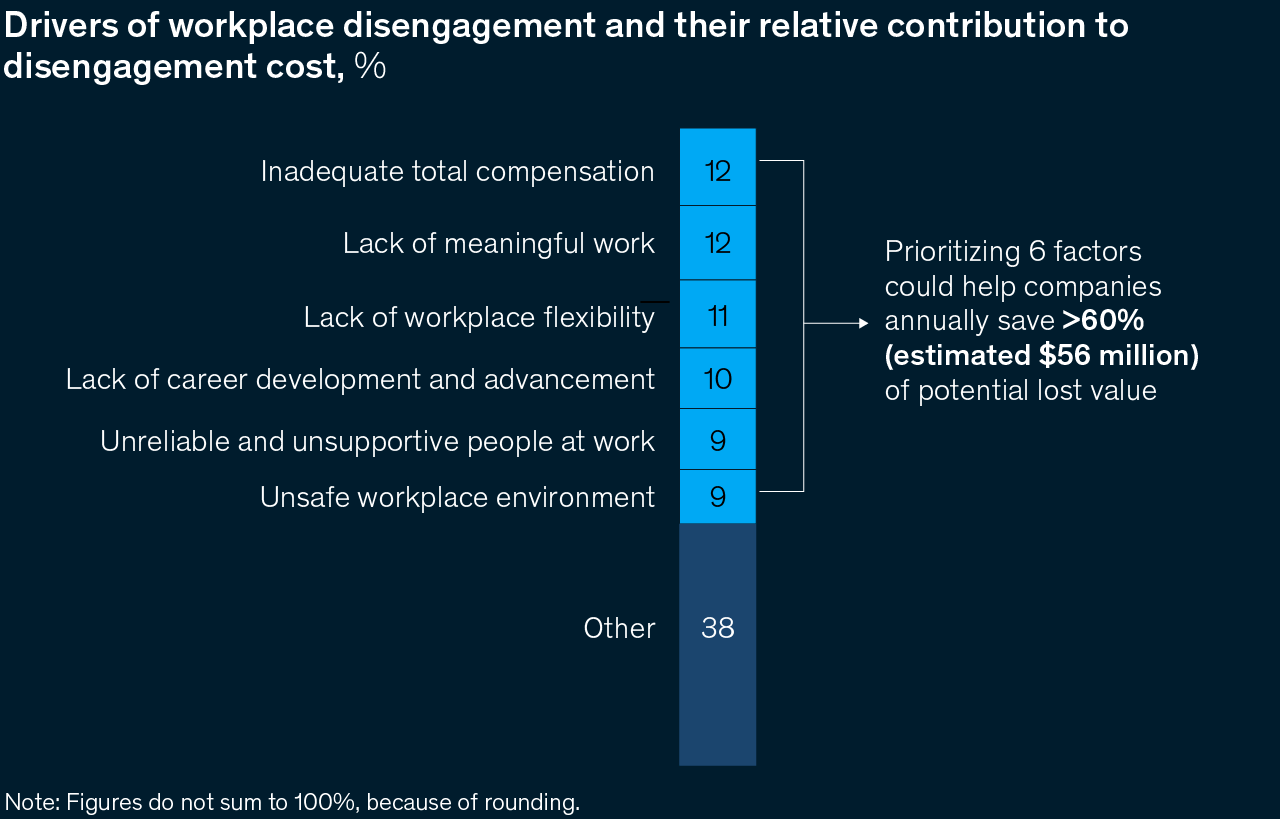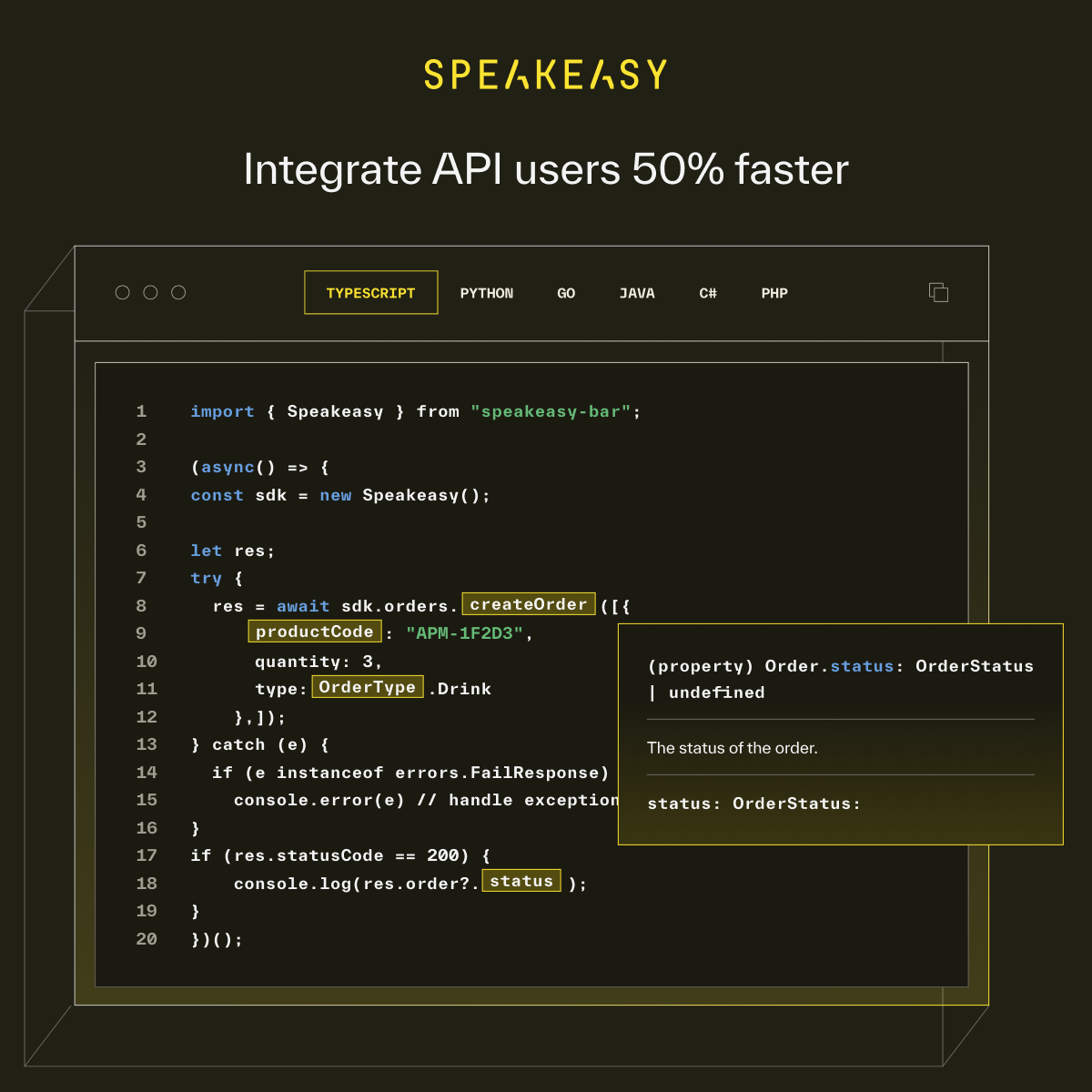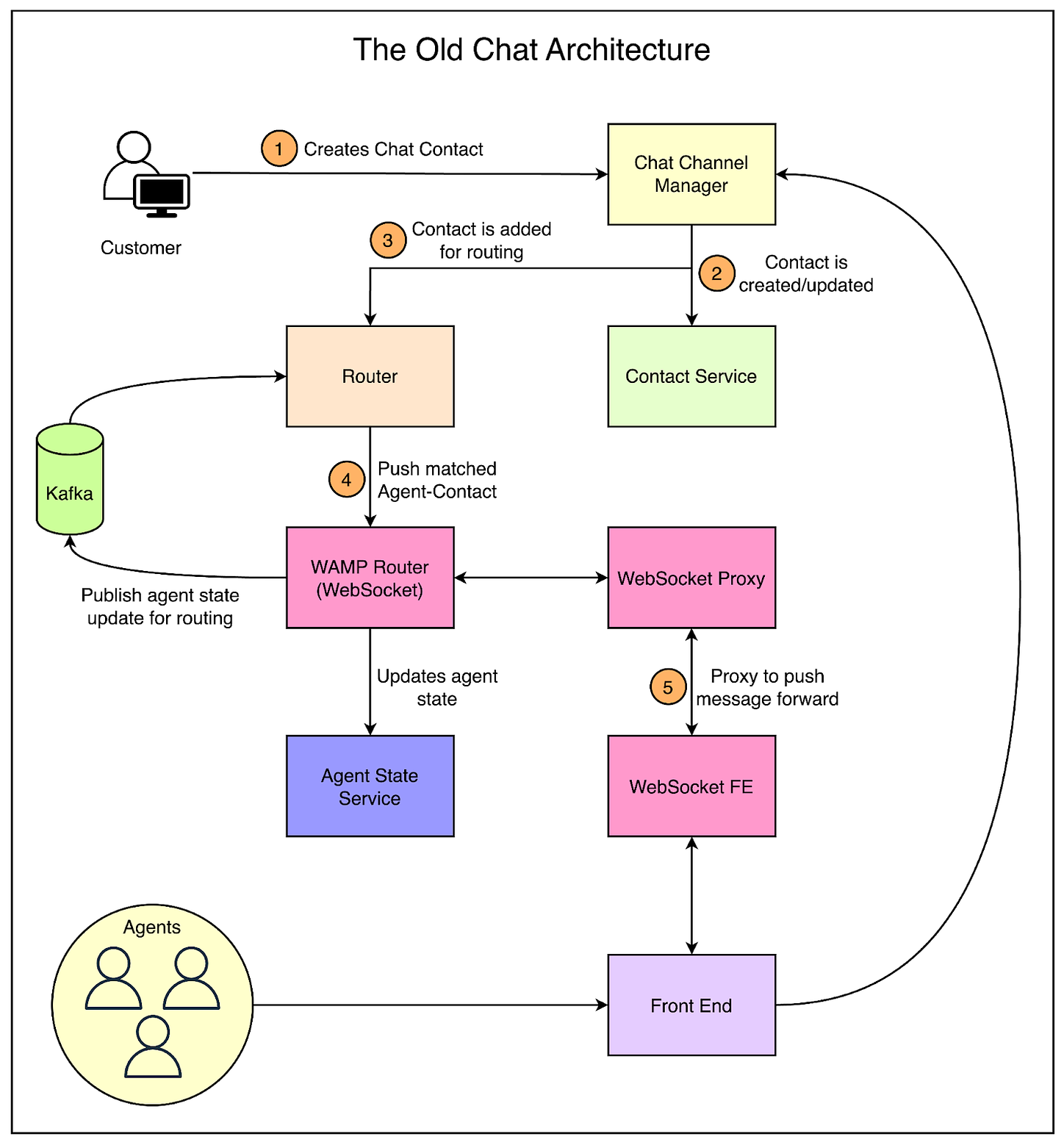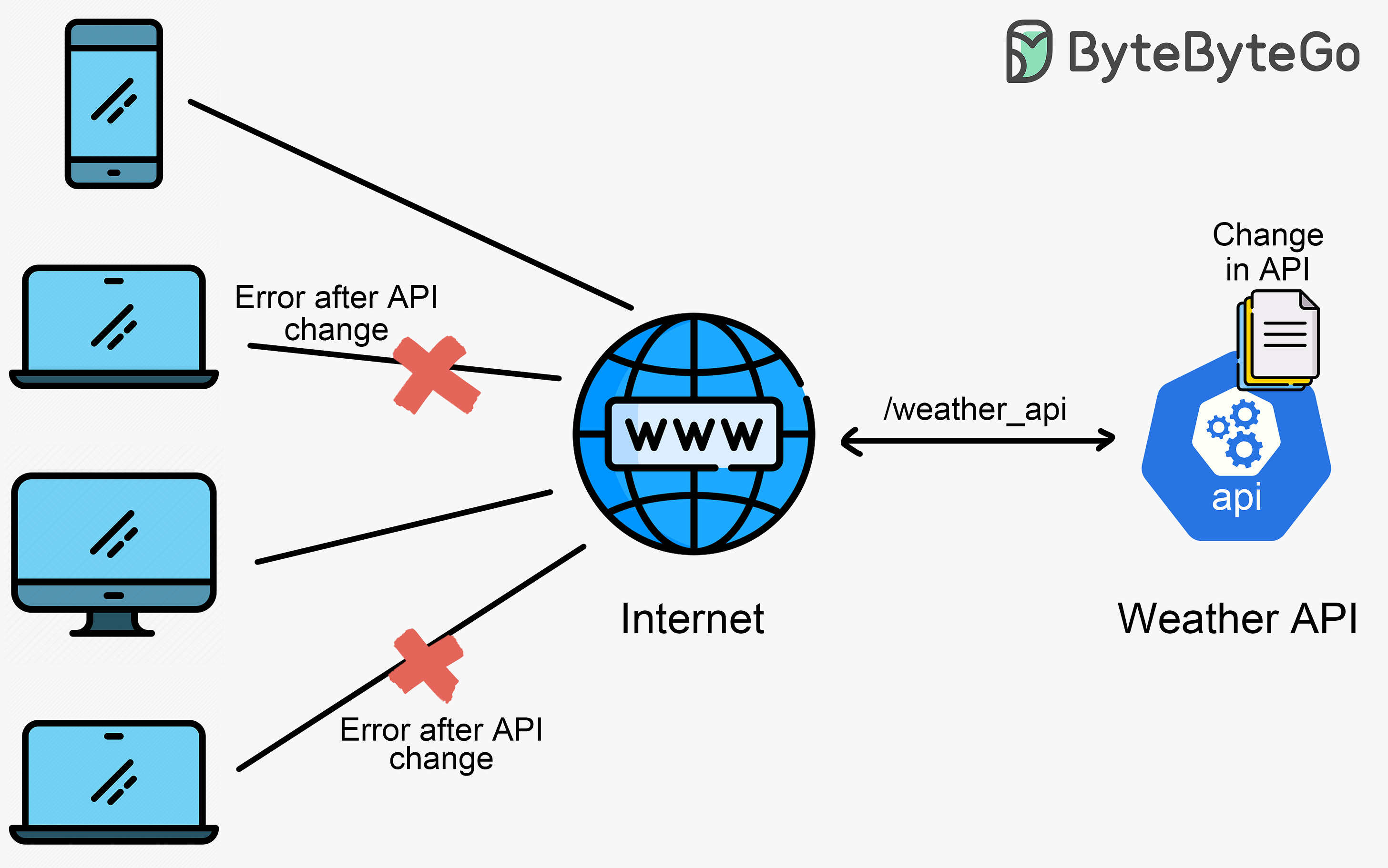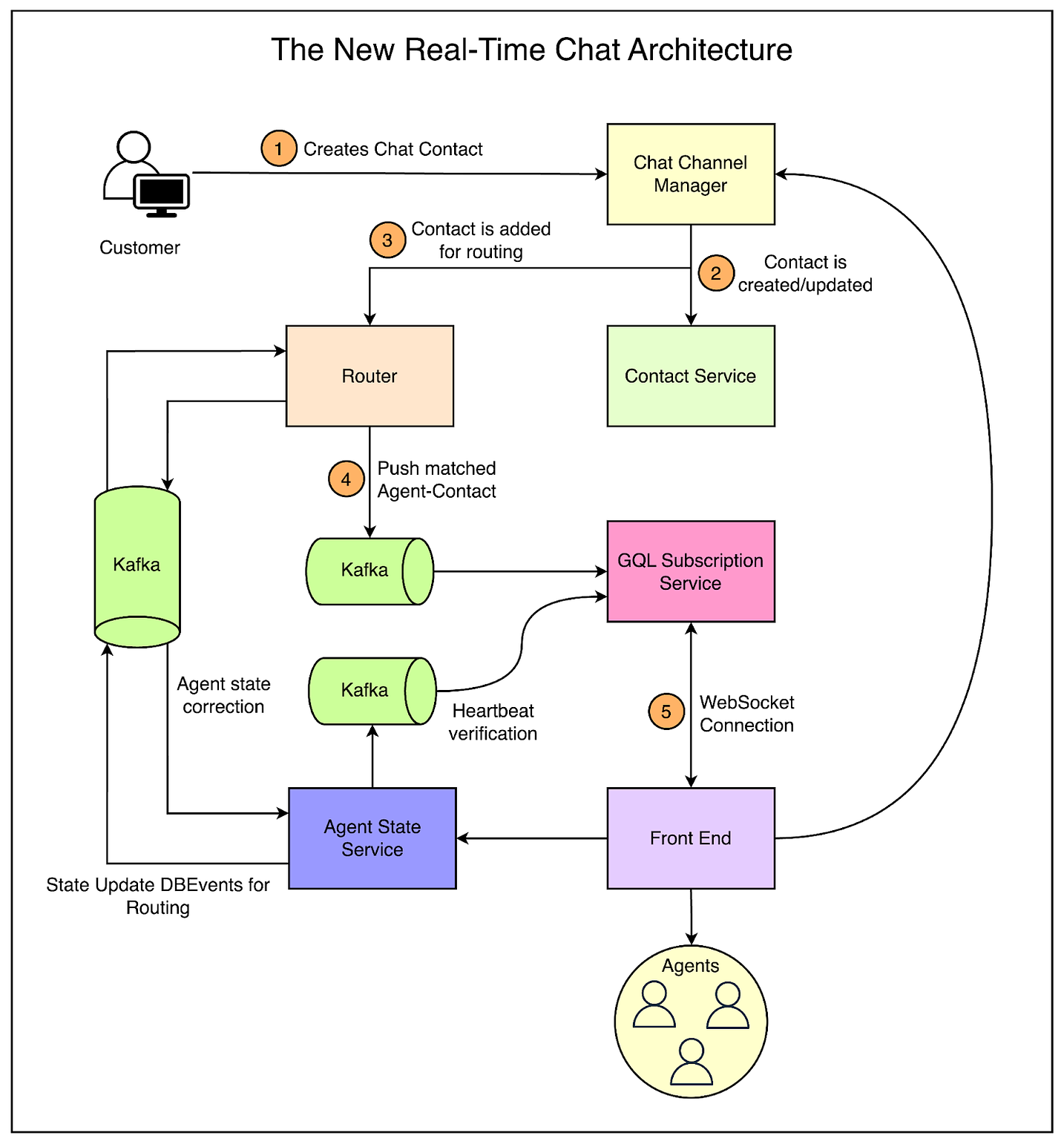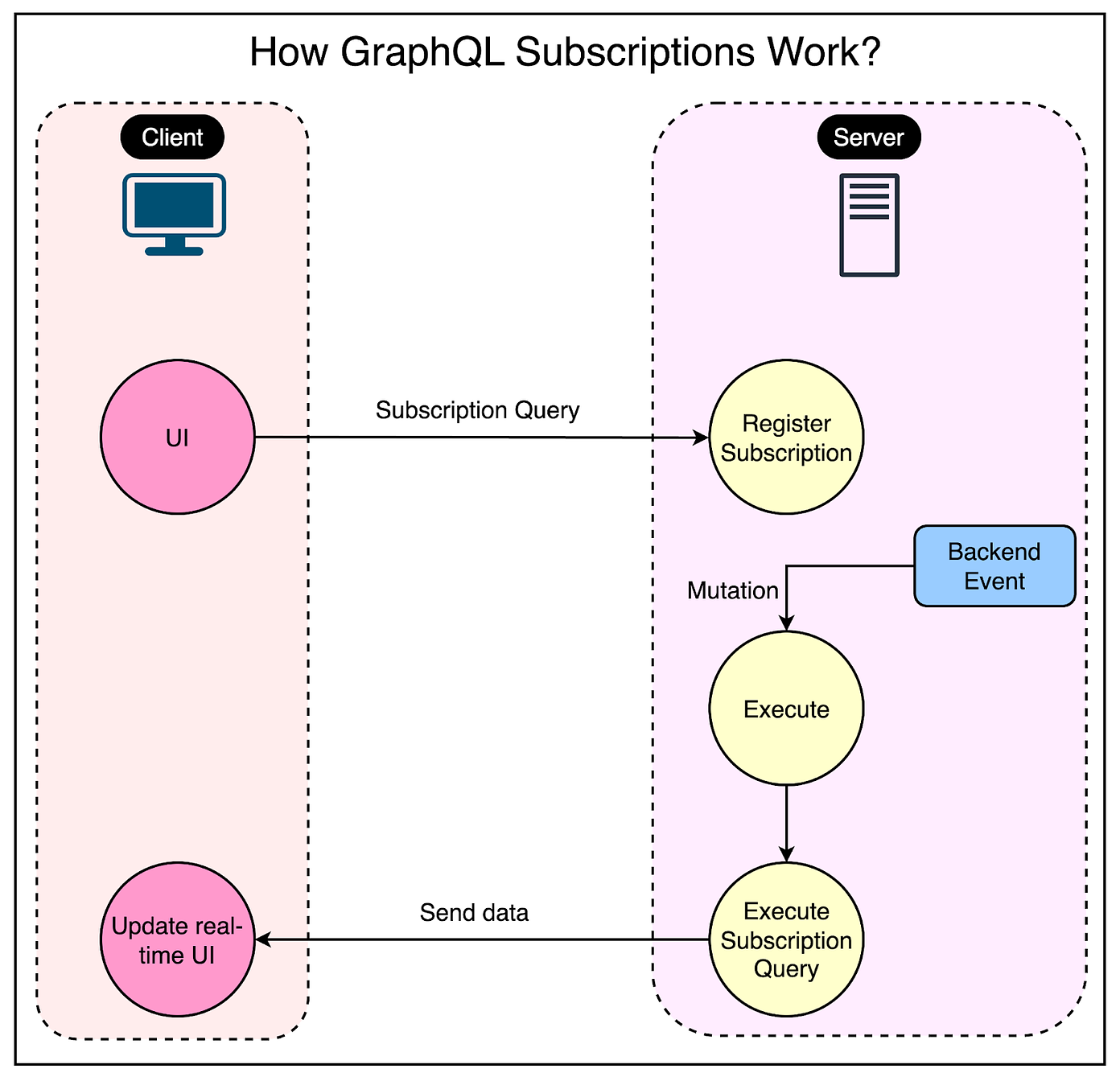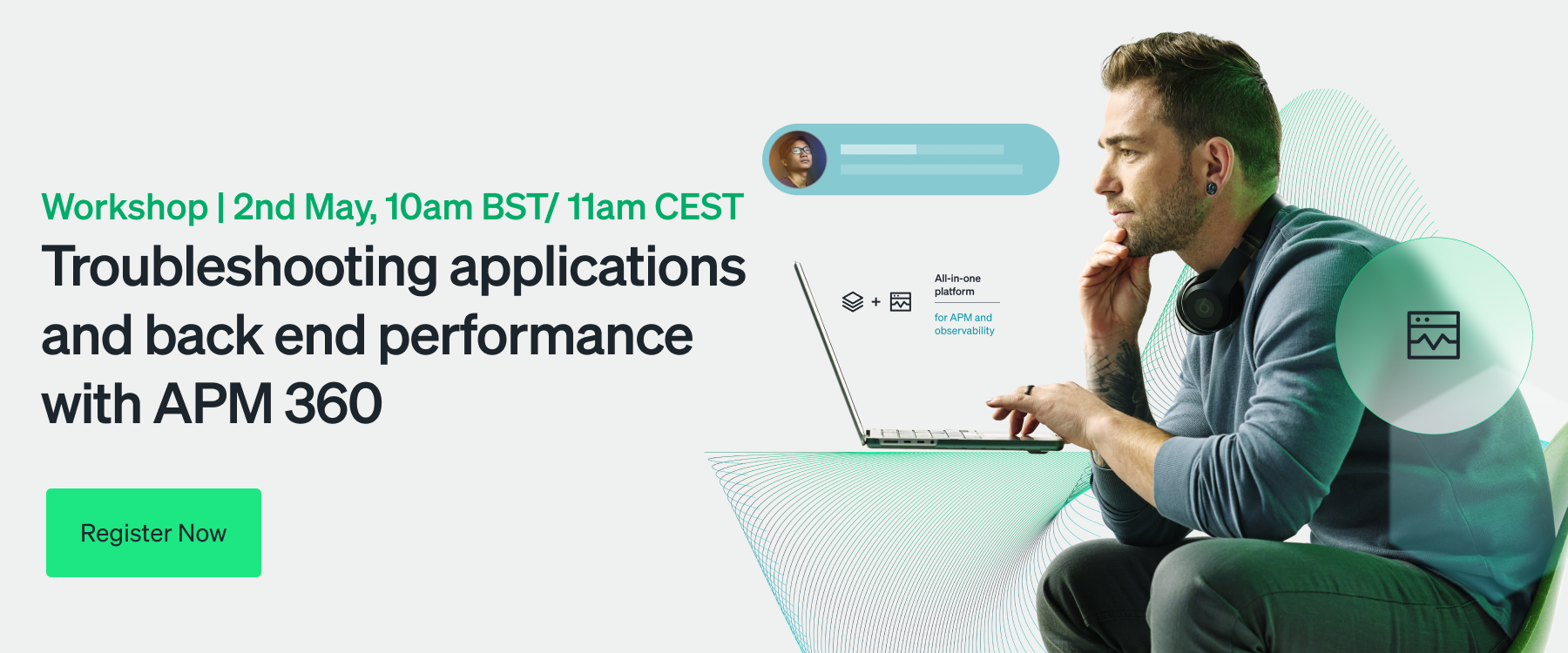Archives
- By thread 5363
-
By date
- June 2021 10
- July 2021 6
- August 2021 20
- September 2021 21
- October 2021 48
- November 2021 40
- December 2021 23
- January 2022 46
- February 2022 80
- March 2022 109
- April 2022 100
- May 2022 97
- June 2022 105
- July 2022 82
- August 2022 95
- September 2022 103
- October 2022 117
- November 2022 115
- December 2022 102
- January 2023 88
- February 2023 90
- March 2023 116
- April 2023 97
- May 2023 159
- June 2023 145
- July 2023 120
- August 2023 90
- September 2023 102
- October 2023 106
- November 2023 100
- December 2023 74
- January 2024 75
- February 2024 75
- March 2024 78
- April 2024 74
- May 2024 108
- June 2024 98
- July 2024 116
- August 2024 134
- September 2024 130
- October 2024 141
- November 2024 171
- December 2024 115
- January 2025 216
- February 2025 140
- March 2025 220
- April 2025 233
- May 2025 239
- June 2025 303
- July 2025 176
-
EP109: Top 6 Tools to Turn Code into Beautiful Diagrams
EP109: Top 6 Tools to Turn Code into Beautiful Diagrams
This week’s system design refresher: Top 9 Must-Read Blogs for Engineers Top 6 Tools to Turn Code into Beautiful Diagrams What is DevSecOps? Top 5 Trade-offs in System Designs Top 8 Cache Eviction Strategies SPONSOR US POST/CON 24 | April 30 - May 1 (Sold Out)(Sponsored)͏ ͏ ͏ ͏ ͏ ͏ ͏ ͏ ͏ ͏ ͏ ͏ ͏ ͏ ͏ ͏ ͏ ͏ ͏ ͏ ͏ ͏ ͏ ͏ ͏ ͏ ͏ ͏ ͏ ͏ ͏ ͏ ͏ ͏ ͏ ͏ ͏ ͏ ͏ ͏ ͏ ͏ ͏ ͏ ͏ ͏ ͏ ͏ ͏ ͏ ͏ ͏ ͏ ͏ ͏ ͏ ͏ ͏ ͏ ͏ ͏ ͏ ͏ ͏ ͏ ͏ ͏ ͏ ͏ ͏ ͏ ͏ ͏ ͏ ͏ ͏ ͏ ͏ ͏ ͏ ͏ ͏ ͏ ͏ ͏ ͏ ͏ ͏ ͏ ͏ ͏ ͏ ͏ ͏ ͏ ͏ ͏ ͏ ͏ ͏ ͏ ͏ ͏ ͏ ͏ ͏ ͏ ͏ ͏ ͏ ͏ ͏ ͏ ͏ ͏ ͏ ͏ ͏ ͏ ͏ ͏ ͏ ͏ ͏ ͏ ͏ ͏ ͏ ͏ ͏ ͏ ͏ ͏ ͏ ͏ ͏ ͏ ͏ ͏ ͏ ͏ ͏ ͏ ͏ ͏ ͏ ͏ ͏ ͏ ͏ ͏ ͏ ͏ ͏ ͏ ͏ ͏ ͏ ͏ ͏ ͏ ͏ ͏ ͏ ͏ ͏ ͏ ͏ ͏ ͏ ͏ ͏ ͏ ͏ ͏ ͏ ͏ ͏ ͏ ͏ ͏ ͏ ͏ ͏ ͏ ͏ ͏ ͏ ͏ ͏ ͏ ͏ ͏ ͏ ͏ ͏ ͏ ͏ ͏ ͏ Forwarded this email? Subscribe here for moreThis week’s system design refresher:
Top 9 Must-Read Blogs for Engineers
Top 6 Tools to Turn Code into Beautiful Diagrams
What is DevSecOps?
Top 5 Trade-offs in System Designs
Top 8 Cache Eviction Strategies
SPONSOR US
POST/CON 24 | April 30 - May 1 (Sold Out)(Sponsored)
POST/CON 24 is sold out, but you can still join the waitlist here for a complimentary ticket and be the first to know if tickets become available!
You’ll hear keynote speakers, see demos of new Postman features, watch an incredible panel discussion on AI—and so much more. If you can’t join us in person, mark your calendar and save this link to check out the livestream of it all on May 1, from 9 am - 11:30 am PDT.
Top 9 Must-Read Blogs for Engineers
Top 6 Tools to Turn Code into Beautiful Diagrams
Diagrams
Go Diagrams
Mermaid
PlantUML
ASCII diagrams
Markmap
Over to you: Did we miss anything? What's your favorite?
Latest articles
If you’re not a paid subscriber, here’s what you missed.
To receive all the full articles and support ByteByteGo, consider subscribing:
What is DevSecOps?
DevSecOps emerged as a natural evolution of DevOps practices with a focus on integrating security into the software development and deployment process. The term "DevSecOps" represents the convergence of Development (Dev), Security (Sec), and Operations (Ops) practices, emphasizing the importance of security throughout the software development lifecycle.
The diagram below shows the important concepts in DevSecOps.Automated Security Checks
Continuous Monitoring
CI/CD Automation
Infrastructure as Code (IaC)
Container Security
Secret Management
Threat Modeling
Quality Assurance (QA) Integration
Collaboration and Communication
Vulnerability Management
Top 5 Trade-offs in System Designs
Everything is a trade-off.
Everything is a compromise.
There is no right or wrong design.
The diagram below shows some of the most important trade-offs.Cost vs. Performance
Reliability vs. Scalability
Performance vs. Consistency
Security vs. Flexibility
Development Speed vs. Quality
Over to you: What trade-offs have you made in the past?
Top 8 Cache Eviction Strategies
LRU (Least Recently Used)
LRU eviction strategy removes the least recently accessed items first. This approach is based on the principle that items accessed recently are more likely to be accessed again in the near future.
MRU (Most Recently Used)
Contrary to LRU, the MRU algorithm removes the most recently used items first. This strategy can be useful in scenarios where the most recently accessed items are less likely to be accessed again soon.
SLRU (Segmented LRU)
SLRU divides the cache into two segments: a probationary segment and a protected segment. New items are initially placed into the probationary segment. If an item in the probationary segment is accessed again, it is promoted to the protected segment.
LFU (Least Frequently Used)
LFU algorithm evicts the items with the lowest access frequency.
FIFO (First In First Out)
FIFO is one of the simplest caching strategies, where the cache behaves in a queue-like manner, evicting the oldest items first, regardless of their access patterns or frequency.
TTL (Time-to-Live)
While not strictly an eviction algorithm, TTL is a strategy where each cache item is given a specific lifespan.
Two-Tiered Caching
In Two-Tiered Caching strategy, we use an in-memory cache for the first layer and a distributed cache for the second layer.
RR (Random Replacement)
Random Replacement algorithm randomly selects a cache item and evicts it to make space for new items. This method is also simple to implement and does not require tracking access patterns or frequencies.
SPONSOR US
Get your product in front of more than 500,000 tech professionals.
Our newsletter puts your products and services directly in front of an audience that matters - hundreds of thousands of engineering leaders and senior engineers - who have influence over significant tech decisions and big purchases.
Space Fills Up Fast - Reserve Today
Ad spots typically sell out about 4 weeks in advance. To ensure your ad reaches this influential audience, reserve your space now by emailing hi@bytebytego.com.
Like
Comment
Restack
© 2024 ByteByteGo
548 Market Street PMB 72296, San Francisco, CA 94104
Unsubscribe
by "ByteByteGo" <bytebytego@substack.com> - 11:46 - 27 Apr 2024 -
Get out of your comfort zone
Readers & Leaders
And more ways to live up to your potential THIS MONTH’S PAGE-TURNERS ON BUSINESS AND BEYOND
Imagine taking a moment to peer into the future, five years from now, and discovering that your life has remained exactly as it is today. Would this unaltered state bring you genuine happiness and fulfillment?
In this edition of Readers & Leaders, get clear about what you want your future life to look like and discover practical tools that can help you get there. Bonnie Wan, a 30-plus-year career brand strategist, offers a creative practice to help you realign your path with your dreams—personally, professionally, culturally, and spiritually; Harvard University professor Cass Sunstein investigates why we stop noticing both the great and not-so-great things around us and how to “dishabituate” at the office, in the bedroom, at the store, on social media, and everywhere else; William Ury, expert negotiator and coauthor of the best-selling classic Getting to Yes, shares time-tested practices to constructively engage and transform conflict; and Andy Cohen and Diane Hoskins, global cochairs of architecture and design firm Gensler, shed light on how design affects our everyday lives.
Want early access to these interviews? Download the McKinsey Insights app to read the latest Author Talks now.it bears repeating
Only on the insights app
TURN BACK THE PAGE
Looking for more life advice? Revisit some of our most popular interviews on personal development.
1. The world’s longest study of adult development finds the key to happy living
2. How to conquer fear, prepare for death, and embrace your power
3. Melody Wilding on turning sensitivity into a superpower
4. Actor Terry Crews wants you to open upBUSINESS BESTSELLERS TOP
8
It’s time to treat yourself to a good read. Explore March’s business bestsellers, prepared exclusively for McKinsey by Circana. Check out the full selection on McKinsey on Books.
BUSINESS OVERALL
BUSINESS HARDCOVER
ECONOMICS
DECISION MAKING
ORGANIZATIONAL BEHAVIOR
WORKPLACE CULTURE
COMPUTERS & AI
SUSTAINABILITY
You Can’t Market Manure at Lunchtime: And Other Lessons from the Food Industry for Creating a More Sustainable Company by Maisie Ganzler (Two Rivers Distribution)
BOOKMARK THIS
If you’d like to propose a book or author for #McKAuthorTalks, please email us at Author_Talks@McKinsey.com. Due to the high volume of requests, we will respond only to those being considered.
—Edited by Eleni Kostopoulos, managing editor, New York
SHARE THESE INSIGHTS
Did you enjoy this newsletter? Forward it to colleagues and friends so they can subscribe too. Was this issue forwarded to you? Sign up for it and sample our 40+ other free email subscriptions here.
This email contains information about McKinsey's research, insights, services, or events. By opening our emails or clicking on links, you agree to our use of cookies and web tracking technology. For more information on how we use and protect your information, please review our privacy policy.
You received this email because you subscribed to the Readers & Leaders newsletter.
Copyright © 2024 | McKinsey & Company, 3 World Trade Center, 175 Greenwich Street, New York, NY 10007
by "McKinsey Readers & Leaders" <publishing@email.mckinsey.com> - 11:04 - 27 Apr 2024 -
Stay Ahead of Maintenance Needs: Explore Our Vehicle Health Monitoring Solution
Stay Ahead of Maintenance Needs: Explore Our Vehicle Health Monitoring Solution
Optimize Fleet Operations and Reduce Maintenance Costs.Impact of not having and having an ADAS on your Fleet Safety


Uffizio Technologies Pvt. Ltd., 4th Floor, Metropolis, Opp. S.T Workshop, Valsad, Gujarat, 396001, India
by "Sunny Thakur" <sunny.thakur@uffizio.com> - 08:00 - 26 Apr 2024 -
How can CFOs be at their best?
On Point
6 ways to raise your game Brought to you by Liz Hilton Segel, chief client officer and managing partner, global industry practices, & Homayoun Hatami, managing partner, global client capabilities
•
The CFO conundrum. CFOs know it’s their most important mission to create outsize value for their companies. That means establishing themselves as the CEO’s thought partner along with managing the finance function. But between dealing with challenges such as the COVID-19 pandemic and fulfilling other demands, including cash management and scenario planning, many finance leaders wonder how they can find the time to perform their daily duties and also be a thoughtful, tactical leader, McKinsey partner Matthew Maloney and coauthors share.
—Edited by Belinda Yu, editor, Atlanta
This email contains information about McKinsey's research, insights, services, or events. By opening our emails or clicking on links, you agree to our use of cookies and web tracking technology. For more information on how we use and protect your information, please review our privacy policy.
You received this newsletter because you subscribed to the Only McKinsey newsletter, formerly called On Point.
Copyright © 2024 | McKinsey & Company, 3 World Trade Center, 175 Greenwich Street, New York, NY 10007
by "Only McKinsey" <publishing@email.mckinsey.com> - 01:48 - 26 Apr 2024 -
You’re invited! Join us for a McKinsey Live webinar on productivity through tech investment
Register now New from McKinsey & Company
Productivity is the foundation of prosperity. We need productivity growth now, more than ever. Today, there is more at stake: new seemingly limitless opportunities from technologies like generative AI, but also the need to address rising inflation, fund the energy transition, and raise living standards as the population ages.
On Monday, May 20 at 10:30 a.m EDT / 4:30 p.m CET, join us for a McKinsey Live session where we explore the most important features of productivity growth across countries and sectors, why it slowed, and the critical role of investment in accelerating it.
Olivia White, a senior partner and director of the McKinsey Global Institute, will share insights from MGI’s latest research. She will be joined by Rodney Zemmel, a senior partner and global leader of McKinsey Digital, who will discuss how leaders can rewire their organizations to make the most of technology investments and contribute to a new wave of productivity growth.This email contains information about McKinsey's research, insights, services, or events. By opening our emails or clicking on links, you agree to our use of cookies and web tracking technology. For more information on how we use and protect your information, please review our privacy policy.
You received this email because you subscribed to our McKinsey Global Institute alert list.
Copyright © 2024 | McKinsey & Company, 3 World Trade Center, 175 Greenwich Street, New York, NY 10007
by "McKinsey Global Institute" <publishing@email.mckinsey.com> - 12:19 - 25 Apr 2024 -
What Happens When a SQL is Executed?
What Happens When a SQL is Executed?
Have you ever wondered how a simple SQL command unlocks database power? SQL, or Structured Query Language, is the backbone of modern data management. It allows efficient retrieval, manipulation, and management of information in relational databases.͏ ͏ ͏ ͏ ͏ ͏ ͏ ͏ ͏ ͏ ͏ ͏ ͏ ͏ ͏ ͏ ͏ ͏ ͏ ͏ ͏ ͏ ͏ ͏ ͏ ͏ ͏ ͏ ͏ ͏ ͏ ͏ ͏ ͏ ͏ ͏ ͏ ͏ ͏ ͏ ͏ ͏ ͏ ͏ ͏ ͏ ͏ ͏ ͏ ͏ ͏ ͏ ͏ ͏ ͏ ͏ ͏ ͏ ͏ ͏ ͏ ͏ ͏ ͏ ͏ ͏ ͏ ͏ ͏ ͏ ͏ ͏ ͏ ͏ ͏ ͏ ͏ ͏ ͏ ͏ ͏ ͏ ͏ ͏ ͏ ͏ ͏ ͏ ͏ ͏ ͏ ͏ ͏ ͏ ͏ ͏ ͏ ͏ ͏ ͏ ͏ ͏ ͏ ͏ ͏ ͏ ͏ ͏ ͏ ͏ ͏ ͏ ͏ ͏ ͏ ͏ ͏ ͏ ͏ ͏ ͏ ͏ ͏ ͏ ͏ ͏ ͏ ͏ ͏ ͏ ͏ ͏ ͏ ͏ ͏ ͏ ͏ ͏ ͏ ͏ ͏ ͏ ͏ ͏ ͏ ͏ ͏ ͏ ͏ ͏ ͏ ͏ ͏ ͏ ͏ ͏ ͏ ͏ ͏ ͏ ͏ ͏ ͏ ͏ ͏ ͏ ͏ ͏ ͏ ͏ ͏ ͏ ͏ ͏ ͏ ͏ ͏ ͏ ͏ ͏ ͏ ͏ ͏ ͏ ͏ ͏ ͏ ͏ ͏ ͏ ͏ ͏ ͏ ͏ ͏ ͏ ͏ ͏ ͏ ͏ Forwarded this email? Subscribe here for moreLatest articles
If you’re not a subscriber, here’s what you missed this month.
To receive all the full articles and support ByteByteGo, consider subscribing:
Have you ever wondered how a simple SQL command unlocks database power? SQL, or Structured Query Language, is the backbone of modern data management. It allows efficient retrieval, manipulation, and management of information in relational databases.
Behind every query we run, there’s a complex sequence of processes. These transform our commands into actions performed by the database management system (DBMS). Mastering these processes lets us harness their full potential.
As developers, it’s crucial to understand the journey of a SQL statement. This journey takes us through the SQL parser, query optimizer, execution engine, and underlying storage engine. With this insight, we can:
Enhance query performance by understanding how data is stored, indexed, and accessed.
Choose effective indexing strategies, informed by our understanding of the DBMS architecture.
Improve resource management, from memory allocation to caching to query execution parallelism.
Diagnose and address performance bottlenecks effectively by identifying potential areas of contention, resource constraints, or inefficiencies within the system.
Join us as we explore MySQL. We will use it to demonstrate database architectures and how queries are processed.
SQL Standards
SQL standards are developed and maintained by international standards organizations, such as the International Organization for Standardization (ISO) and the American National Standards Institute (ANSI). These standards are shaped with contributions from industry experts and database vendors. Their goal is to ensure interoperability, portability, and consistency across various SQL implementations. This enables developers to write SQL code that can run on multiple database platforms.
The diagram below presents a brief history of SQL standards.
There are 4 stages in SQL standard development. It began with the early versions – SQL-86, SQL-89, and SQL-92- – which formed the foundation and introduced major keywords. SQL:1999 is often recognized as a pivotal point in modern SQL development. However, later standards have continued to introduce valuable features and improvements. These address ongoing challenges in data management and adapt to technological advancements.
Each SQL standard builds on the work of its predecessors, contributing to the ongoing evolution and refinement of the language.
SQL Statement
A SQL statement is a command interpreted and executed by the SQL engine. It is primarily considered a declarative language, focusing on specifying what data should be retrieved or manipulated rather than how to retrieve it.
SQL abstracts the implementation details of data retrieval and manipulation. Developers use SQL's high-level syntax to express their data requirements without worrying about low-level details such as disk I/O operations, data access paths, or index usage.
The portability of SQL across different database platforms is one of its key advantages. SQL queries written for one system often require minimal or no modifications to run on another, as long as they adhere to the SQL standards.
Consider the following example of SQL syntax. The SELECT statement retrieves specific data from one or more tables. It’s paired with the FROM clause, which specifies the tables involved in the query.
To incorporate data from multiple tables, the JOIN clause establishes relationships between them based on shared keys or conditions. The WHERE clause allows for the filtering of rows based on specified conditions, further refining the result set.
For aggregating data based on common attributes, the GROUP BY clause is employed. This facilitates summary statistics or grouping operations. Finally, the ORDER BY clause sorts the query results in a specified order based on columns.
SQL Execution (Query)
Let’s explore the lifecycle of a SQL statement in a relational database, using MySQL as an example.
Broadly speaking, MySQL is structured into two main tiers: the Server tier and the Storage Engine tier.
Server Tier: This tier includes connectors, query caches, analyzers, optimizers, and executors. It covers most of the core service functions of MySQL, including all built-in functions such as date, time, mathematical, and cryptographic functions. All cross-storage-engine functionalities, like stored procedures, triggers, and views, are implemented at this layer.
Storage Engine Tier: This layer is responsible for data storage and retrieval. Its pluggable architecture allows for the use of various storage engines, such as InnoDB, MyISAM, and Memory. InnoDB is the most popular and has been the default storage engine since MySQL version 5.5.5.
When executing a “create table” command, MySQL defaults to using InnoDB. However, users can specify another engine by including options like engine=memory for an in-memory engine or other supported engines according to their needs. Each storage engine offers different methods of accessing table data and supports different features.
The diagram below illustrates the high-level architecture of MySQL. Let's walk through it step by step.

Continue reading this post for free, courtesy of Alex Xu.
A subscription gets you:
An extra deep dive on Thursdays Full archive Many expense it with team's learning budget Like
Comment
Restack
© 2024 ByteByteGo
548 Market Street PMB 72296, San Francisco, CA 94104
Unsubscribe
by "ByteByteGo" <bytebytego@substack.com> - 11:36 - 25 Apr 2024 -
Better health outcomes for women could bring immense economic benefits
On Point
4 areas to focus on Brought to you by Liz Hilton Segel, chief client officer and managing partner, global industry practices, & Homayoun Hatami, managing partner, global client capabilities
•
Longer, not healthier. Contrary to popular belief, women’s health includes more than just reproductive health; it includes any condition that affects women “uniquely, differently, or disproportionately,” McKinsey Global Institute director Kweilin Ellingrud and McKinsey Health Institute affiliated leader Lucy Pérez share in an episode of The McKinsey Podcast. While women have a longer life expectancy than men, on average they spend 25% more of their lives in poor health than men do. The health gap is most prevalent during women’s prime working years, resulting in significant economic repercussions.
—Edited by Jana Zabkova, senior editor, New York
This email contains information about McKinsey's research, insights, services, or events. By opening our emails or clicking on links, you agree to our use of cookies and web tracking technology. For more information on how we use and protect your information, please review our privacy policy.
You received this newsletter because you subscribed to the Only McKinsey newsletter, formerly called On Point.
Copyright © 2024 | McKinsey & Company, 3 World Trade Center, 175 Greenwich Street, New York, NY 10007
by "Only McKinsey" <publishing@email.mckinsey.com> - 01:13 - 25 Apr 2024 -
How should European companies catch up on cloud efforts?
On Point
5 strategic cloud priorities Brought to you by Liz Hilton Segel, chief client officer and managing partner, global industry practices, & Homayoun Hatami, managing partner, global client capabilities
•
Untapped potential. A recent McKinsey survey found that 95% of European companies are capturing value from the cloud. By and large, however, European enterprises—like their counterparts in Asia and in North America—are struggling to attain the full value of cloud technologies. Many companies use cloud tools to improve IT, which tends to generate lower value. Enhancing business operations, however, could create significantly more value, McKinsey partner Bernhard Mühlreiter and coauthors reveal.
•
A critical opportunity. It is critical for European companies to accelerate their cloud ambitions. McKinsey estimates that up to $3 trillion is up for grabs for Forbes Global 2000 companies that go beyond cloud adoption and embrace innovation. The good news is that in Europe, the cloud is seen as pivotal for operational efficiency and overall transformation. In fact, according to our survey, more than 90% of European companies rank their cloud programs a priority. Explore five strategic priorities for European cloud journeys, and visit McKinsey Digital for more on creating value with technology.
—Edited by Belinda Yu, editor, Atlanta
This email contains information about McKinsey's research, insights, services, or events. By opening our emails or clicking on links, you agree to our use of cookies and web tracking technology. For more information on how we use and protect your information, please review our privacy policy.
You received this newsletter because you subscribed to the Only McKinsey newsletter, formerly called On Point.
Copyright © 2024 | McKinsey & Company, 3 World Trade Center, 175 Greenwich Street, New York, NY 10007
by "Only McKinsey" <publishing@email.mckinsey.com> - 01:13 - 24 Apr 2024 -
Advanced Driver Assistance System - Drive your Fleets Smarter, and Safer
Advanced Driver Assistance System - Drive your Fleets Smarter, and Safer
Your Gateway to Safer Roads and Higher Profits System (ADAS)Impact of not having and having an ADAS on your Fleet Safety


Uffizio Technologies Pvt. Ltd., 4th Floor, Metropolis, Opp. S.T Workshop, Valsad, Gujarat, 396001, India
by "Sunny Thakur" <sunny.thakur@uffizio.com> - 08:00 - 23 Apr 2024 -
Your employees are disengaged. Here’s how to turn it around.
Intersection
Get your briefing Employee disengagement is costing companies—to the tune of $90 million in lost productivity annually. Prioritizing six factors can help recapture some of that potential lost value, say McKinsey senior partner Aaron De Smet and coauthors. To learn more about how to keep your employees engaged, check out the latest edition of the Five Fifty.
Share these insights
Did you enjoy this newsletter? Forward it to colleagues and friends so they can subscribe too. Was this issue forwarded to you? Sign up for it and sample our 40+ other free email subscriptions here.
This email contains information about McKinsey’s research, insights, services, or events. By opening our emails or clicking on links, you agree to our use of cookies and web tracking technology. For more information on how we use and protect your information, please review our privacy policy.
You received this email because you subscribed to our McKinsey Quarterly Five Fifty alert list.
Copyright © 2024 | McKinsey & Company, 3 World Trade Center, 175 Greenwich Street, New York, NY 10007
by "McKinsey Quarterly Five Fifty" <publishing@email.mckinsey.com> - 04:40 - 23 Apr 2024 -
How Uber Built Real-Time Chat to Handle 3 Million Tickets Per Week?
How Uber Built Real-Time Chat to Handle 3 Million Tickets Per Week?
Integrate API users 50% faster (Sponsored) Creating a frictionless API experience for your partners and customers no longer requires an army of engineers. Speakeasy’s platform makes crafting type-safe, idiomatic SDKs for enterprise APIs easy. That means you can unlock API revenue while keeping your team focused on what matters most: shipping new products. Make SDK generation part of your API’s CI/CD and distribute libraries that users love at a fraction of the cost of maintaining them in-house.͏ ͏ ͏ ͏ ͏ ͏ ͏ ͏ ͏ ͏ ͏ ͏ ͏ ͏ ͏ ͏ ͏ ͏ ͏ ͏ ͏ ͏ ͏ ͏ ͏ ͏ ͏ ͏ ͏ ͏ ͏ ͏ ͏ ͏ ͏ ͏ ͏ ͏ ͏ ͏ ͏ ͏ ͏ ͏ ͏ ͏ ͏ ͏ ͏ ͏ ͏ ͏ ͏ ͏ ͏ ͏ ͏ ͏ ͏ ͏ ͏ ͏ ͏ ͏ ͏ ͏ ͏ ͏ ͏ ͏ ͏ ͏ ͏ ͏ ͏ ͏ ͏ ͏ ͏ ͏ ͏ ͏ ͏ ͏ ͏ ͏ ͏ ͏ ͏ ͏ ͏ ͏ ͏ ͏ ͏ ͏ ͏ ͏ ͏ ͏ ͏ ͏ ͏ ͏ ͏ ͏ ͏ ͏ ͏ ͏ ͏ ͏ ͏ ͏ ͏ ͏ ͏ ͏ ͏ ͏ ͏ ͏ ͏ ͏ ͏ ͏ ͏ ͏ ͏ ͏ ͏ ͏ ͏ ͏ ͏ ͏ ͏ ͏ ͏ ͏ ͏ ͏ ͏ ͏ ͏ ͏ ͏ ͏ ͏ ͏ ͏ ͏ ͏ ͏ ͏ ͏ ͏ ͏ ͏ ͏ ͏ ͏ ͏ ͏ ͏ ͏ ͏ ͏ ͏ ͏ ͏ ͏ ͏ ͏ ͏ ͏ ͏ ͏ ͏ ͏ ͏ ͏ ͏ ͏ ͏ ͏ ͏ ͏ ͏ ͏ ͏ ͏ ͏ ͏ ͏ ͏ ͏ ͏ ͏ ͏ Forwarded this email? Subscribe here for moreIntegrate API users 50% faster (Sponsored)
Creating a frictionless API experience for your partners and customers no longer requires an army of engineers. Speakeasy’s platform makes crafting type-safe, idiomatic SDKs for enterprise APIs easy. That means you can unlock API revenue while keeping your team focused on what matters most: shipping new products. Make SDK generation part of your API’s CI/CD and distribute libraries that users love at a fraction of the cost of maintaining them in-house.
Uber has a diverse customer base consisting of riders, drivers, eaters, couriers, and merchants.
Each user persona has different support requirements when reaching out to Uber’s customer agents through various live and non-live channels. Live channels are chat and phone while non-live is Uber’s inApp messaging channel.
For the users, the timely resolution of issues takes center stage. However, Uber’s main concern revolves around customer satisfaction and the cost of resolution of tickets. To keep costs in control, Uber needs to maintain a low CPC (cost-per-contact) with a good customer satisfaction rating.
Based on their analysis, they found that the live chat channel offers the most value when compared to other channels. It allows for:
Higher automation rate
Higher staffing efficiency since agents can handle multiple chats at the same time
High FCR (first contact resolution)
However, from 2019 to 2024, only 1% of all support interactions (also known as contacts) were served via the live chat channel because the chat infrastructure at Uber wasn’t capable of meeting the demand.
In this post, we look at how Uber built their real-time chat channel to work at the required scale.
The Legacy Chat Architecture
The legacy architecture for live chat at Uber was built using the WAMP protocol. WAMP or Web Application Messaging Protocol is a WebSocket subprotocol that is used to exchange messages between application components.
It was primarily used for message passing and PubSub over WebSockets to relay contact information to the agent’s machine.
The below diagram shows a high-level flow of the chat contact from being created to being routed to an agent on the front end.
This architecture had some core issues as follows:
1 - Reliability
Once the traffic scaled to 1.5X, the system started to face reliability issues.
Almost 46% of the events from the backend were not getting delivered to the Agent’s browser, adding to the customer’s wait time to speak to an agent. It also created delays for the agent resulting in wastage of bandwidth.
2 - Scale
Once the request per second crossed 10, the system’s performance deteriorated due to high memory usage and file descriptor leaks.
Also, it wasn’t possible to horizontally scale the system due to limitations with older versions of the WAMP library.
3 - Observability and Debugging
There were major issues related to observability and debugging:
It wasn’t possible to track the health of the chat contacts. This made it difficult to understand whether chat contacts were missing SLAs due to engineering or staffing issues.
Almost 8% of the chat volume wasn’t getting routed to any customer agent.
The WAMP protocol and its libraries were deprecated and didn’t provide sufficient insights into their inner workings. This made debugging for issues difficult.
4 - Stateful
The services in the architecture were stateful resulting in maintenance and restart complications.
This caused frequent spikes in message delivery time and losses.
Latest articles
If you’re not a paid subscriber, here’s what you missed.
To receive all the full articles and support ByteByteGo, consider subscribing:
Goals of the New Chat Architecture
Due to these challenges, Uber decided to build a new real-time chat infrastructure with the following goals:
Scale up the chat traffic from 1% to 80% of the overall contact volume by the end of 2023. This came to around 3 million tickets per week.
The process of connecting a customer to an agent after identification should have a greater than 99.5% success rate on the first trial.
Build end-to-end observability and debuggability over the entire chat flow.
Build stateless services that can be scaled horizontally.
The New Live Chat Architecture
It was important for the new architecture to be simple to improve transparency and scalability.
The team at Uber decided to go with the Push Pipeline. It was a simple WebSocket server that agent machines would connect to and be able to send and receive messages through one generic socket channel.
The below diagram shows the new architecture.
Below are the details of the various components:
Front End UI
This is used by the agents to interact with the customers.
Widgets and different actions are made available to the agents to take appropriate actions for the customer.
Contact Reservation
The router is the service that finds the most appropriate match between the agent and contact depending on the contact details.
An agent is selected based on the concurrency set of the agent’s profile such as the number of chats an agent can handle simultaneously. Other considerations include:
SLA-based routing: Chat contacts are prioritized based on SLA.
Sticky routing: Reopened contacts are sent to the same agents that handled the ticket earlier.
Priority routing: Prioritizing based on different rules
On finding the match, the contact is pushed into a reserved state for the agent.
Push Pipeline
When the contact is reserved for an agent, the information is published to Kafka and is received by the GQL Subscription Service.
On receiving the information through the socket via GraphQL subscriptions, the Front End loads the contact for the agent along with all the necessary widgets and actions.
Agent State
When the agent starts working, he/she goes online via a toggle on the Front End.
This updates the Agent State service, allowing the agent to be mapped to a contact.
GQL Subscription Service
The front-end team was already using GraphQL for HTTP calls to the services. Due to this familiarity, the team selected GraphQL subscriptions for pushing data from the server to the client.
The below diagram shows how GraphQL subscriptions work on a high level.
In GraphQL subscriptions, the client sends messages to the server via subscription requests. The server matches the queries and sends back messages to the client machines. In this case, the client machines are the agent machines.
Uber’s engineering team used GraphQL over WebSockets by leveraging the graphql-ws library. The library had almost 2.3 million weekly downloads and was also recommended by Apollo.
To improve the availability, they used a few techniques:
Enabled bidirectional ping pong messages to prevent hung sockets and disconnect them automatically in case of an unreliable connection.
Backed-off reconnects are automatically attempted after any disconnects. On successful reconnection, all the reserved or assigned contacts are fetched so the agent can receive them.
For a reserved contact, if the front end doesn’t send an acknowledgment to the chat service, they reserve the same contact for another available agent. The health of the WebSocket and http protocols are checked by sending a heartbeat over the GraphQL subscriptions.
Test Results from the New Chat Architecture
Uber performed functional and non-functional tests to ensure that both customers and agents received the best experience.
Some results from the tests were as follows:
Each machine was able to establish a 10K socket connection. They were able to horizontally scale and test for 20 times the number of events supported by the previous architecture.
Shadow traffic flows were tested with a capacity of 40K contacts and 2000 agents daily. The process didn’t reveal any problems and the latency and availability were satisfactory.
Existing traffic was directed through the new system with the old user interface for agents to serve as a reliability test. They were able to successfully manage the traffic while maintaining latency within the defined SLAs.
The earlier system had bugs where agents who finished work for the day remained online in the system if they closed their tabs. This resulted in increased customer wait times since the pipeline tried to push events to these offline agents. With the new system, they started to automatically log out agents based on recent acknowledgment misses.
The chat channel has been scaled to around 36% of the overall Uber Contact volume that is routed to agents. Over the next few months, the plan is to increase the share further.
The error rate of delivering the contact has gone down from 46% to just 0.45% in the new architecture.
The new architecture has fewer services, protocols, and better observability thereby improving the overall simplicity of the setup.
References:
SPONSOR US
Get your product in front of more than 500,000 tech professionals.
Our newsletter puts your products and services directly in front of an audience that matters - hundreds of thousands of engineering leaders and senior engineers - who have influence over significant tech decisions and big purchases.
Space Fills Up Fast - Reserve Today
Ad spots typically sell out about 4 weeks in advance. To ensure your ad reaches this influential audience, reserve your space now by emailing hi@bytebytego.com.
Like
Comment
Restack
© 2024 ByteByteGo
548 Market Street PMB 72296, San Francisco, CA 94104
Unsubscribe
by "ByteByteGo" <bytebytego@substack.com> - 11:36 - 23 Apr 2024 -
Re: Audit Report Overview !
Please let me know, if you are interested in our services or not. A prompt reply will be highly appreciated.
Please provide some response even if you are not interested.
Thanks
From: Rose Williams
Sent: Monday, April 08, 2024 9:07 AM
To: info@learn.odoo.com
Subject: WEB Accessibility report !
I have found your website via Google.
I was going through your website www.learn.odoo.com & I personally see a lot of potential in your website & business.
With your permission, I would like to send you an Audit report of your website with Prices showing you a few things to greatly improve these search results for you.
These things are not difficult, and my report will be very specific. It will show you exactly what needs to be done to move you up in the rankings dramatically.
We can place your website on Google's 1st page.
May I send you a “Quote & Report?” If you are interested.
Thanks & Regards,
Rose Williams
Marketing Manager
by "Rose Williams" <rosewilliams091@outlook.com> - 08:51 - 23 Apr 2024 -
The wait is over.. Announcing the 2024 Remote Influencer Report 🎉
The wait is over.. Announcing the 2024 Remote Influencer Report 🎉
See the top 150 remote experts who made the list!Hi MD,
🎉 We are excited to announce that the 2024 Remote Influencer Report is now available! 🎉
We searched the globe to find the top 150 experts on the future of work so you know who to follow for tips, advice, and credible insights. We have organized the report by three types of influencers:
- Remote Innovators are those who paved the way for remote work.
- Remote Enablers are those who make remote work possible today.
- Remote Accelerators are the ones who influence what our working world will look like in the future.
Check out the report to see who made the list, hear their expert advice, and get links to the remote resources that they provide!
Thank you,

Hallie Wiseman
Manager, Global CampaignsNominate an Expert for the
2025 Remote Influencer ReportIdentifying the top influencers in remote work each year is no easy task, and we know there are others who are making waves. If you know someone who you think should be on the next Remote Influencer Report, you can nominate them below.




You received this email because you are subscribed to News & Offers from Remote Europe Holding B.V
Update your email preferences to choose the types of emails you receive.
Unsubscribe from all future emailsRemote Europe Holding B.V
Copyright © 2024 All rights reserved.
Kraijenhoffstraat 137A 1018RG Amsterdam The Netherlands
by "Remote" <hello@remote-comms.com> - 08:02 - 23 Apr 2024 -
[Online workshop] Troubleshooting Applications and back end performance with APM 360
New Relic
 Register for this free online workshop on the 2nd May at 10 AM BST/ 11 AM CEST for a comprehensive introduction to New Relic APM 360, the cutting-edge solution for modern distributed applications.
Register for this free online workshop on the 2nd May at 10 AM BST/ 11 AM CEST for a comprehensive introduction to New Relic APM 360, the cutting-edge solution for modern distributed applications.
APM 360 allows you to get a unified view of critical telemetry data across your stack and development lifecycle. Prevent issues before they escalate and troubleshoot faster with integrated infrastructure monitoring, error user impact analysis, and distributed tracing. APM 360 helps eliminate blind spots with guided workflows, ensuring comprehensive observability.
In this online workshop, you’ll learn how to:
- Use new UI components to troubleshoot, assess user impact, and uncover coverage gaps
- Work with the updated infrastructure table to assess underlying backend issues
- Utilise the new distributed tracing component to quickly assess impacted services
- Explore the error user impact chart
- Determine root cause with errors inbox and error stack traces data
Register now Need help? Let's get in touch.



This email is sent from an account used for sending messages only. Please do not reply to this email to contact us—we will not get your response.
This email was sent to info@learn.odoo.com Update your email preferences.
For information about our privacy practices, see our Privacy Policy.
Need to contact New Relic? You can chat or call us at +44 20 3859 9190.
Strand Bridge House, 138-142 Strand, London WC2R 1HH
© 2024 New Relic, Inc. All rights reserved. New Relic logo are trademarks of New Relic, Inc

by "New Relic" <emeamarketing@newrelic.com> - 06:06 - 23 Apr 2024 -
How could open-source software help auto leaders?
On Point
Advice for AV makers Brought to you by Liz Hilton Segel, chief client officer and managing partner, global industry practices, & Homayoun Hatami, managing partner, global client capabilities
•
AV development bottlenecks. The year 2023 was an interesting tipping point for AVs. Some companies successfully ran and scaled their first commercial operations and increased funding, while others experienced big setbacks. A recent McKinsey survey of auto executives found that the timeline for AVs has extended by an average of two years, with leaders citing regulation, technology, and consumer safety as the main bottlenecks, McKinsey partner Takuto Ueha reveals on a recent Drivers of Disruption podcast episode.
•
Open-source software. When companies can’t access self-driving technology, the AV industry’s growth is hindered, says TIER IV CEO Shinpei Kato, who joined Ueha on the podcast. Open-source software that’s available to all could help leaders develop AVs faster and make it easier for businesses that have deployed AVs in one location to expand to other areas, Kato adds. See how AV leaders can benefit from open-source software, and visit the McKinsey Center for Future Mobility for more on autonomous driving.
—Edited by Belinda Yu, editor, Atlanta
This email contains information about McKinsey's research, insights, services, or events. By opening our emails or clicking on links, you agree to our use of cookies and web tracking technology. For more information on how we use and protect your information, please review our privacy policy.
You received this newsletter because you subscribed to the Only McKinsey newsletter, formerly called On Point.
Copyright © 2024 | McKinsey & Company, 3 World Trade Center, 175 Greenwich Street, New York, NY 10007
by "Only McKinsey" <publishing@email.mckinsey.com> - 01:21 - 23 Apr 2024 -
Employment Verification - 371154895
Hi,
We are from accurate background we are third party background screening company we would like to verify details submitted by a person listing your company as an employer . Please provide contact information for your Human Resources department or the designated contact handling verifications of employment. Thank you for your time.
Thanks & Regards
Pooja Singh
Verification Specialist
+91-540-277-3478 Ext: 60491| www.accurate.com
This email and any attachments thereto may contain private, confidential, and privileged material for the sole use of the intended recipient named in the original email to which this message was attached. Any review, copying, or distribution of this email (or any attachments thereto) by others is strictly prohibited. If you are not the intended recipient, please return this email to the sender immediately and permanently delete the original and any copies of this email and any attachments thereto.
by "Pooja Singh" <posingh@accurate.com> - 01:20 - 22 Apr 2024 -
Reminder: Explore AI Defense Strategies with Sumo Logic
Sumo Logic
Join us at Booth S20 to discuss Cloud Infrastructure Security and Cloud SIEM.
 Dear Mohammad,
Dear Mohammad,
Do you want to power DevSecOps in this modern age?
Then join us to the AWS Summit London to learn more about how you can align these components in a modern and most efficient way, with Sumo Logic!
On top of that you can find out more about the implications of AI in a modern defense strategy and explore how to defend your business against modern AI-enabled adversaries.
Build an AI strategy to help your Security Operations teams adapt to new threats in this new and ever-changing cyber landscape.
We're eager to meet you at booth B36 for an in-depth conversation or a demo.
Best regards,
Sumo Logic
About Sumo Logic
Sumo Logic is the pioneer in continuous intelligence, a new category of software to address the data challenges presented by digital transformation, modern applications, and cloud computing.Sumo Logic, Aviation House, 125 Kingsway, London WC2B 6NH, UK
© 2024 Sumo Logic, All rights reserved.Unsubscribe 


by "Sumo Logic" <marketing-info@sumologic.com> - 06:01 - 22 Apr 2024 -
Here’s to your (organization’s) health: A leader’s guide
Health is wealth Brought to you by Liz Hilton Segel, chief client officer and managing partner, global industry practices, & Homayoun Hatami, managing partner, global client capabilities
After more than two decades of research on organizational health—based on a company’s culture, behavior, and management practices—we know that the link between how well leaders run the organization and its ultimate performance is undeniable. Healthier organizations see a range of benefits that their not-so-healthy counterparts do not: among them, these companies are more resilient, do a better job retaining talent, and realize higher earnings growth in both the short and the long term. As the fundamental relationship between health and performance endures, the features that make an organization healthy continue to evolve over time. This week, we look at the aspects of organizational health that, according to recent McKinsey research, matter now more than ever.
So much in the business and economic environment has changed and challenged leaders in recent years. Yet the latest results from McKinsey’s Organizational Health Index (OHI) confirm that company culture remains a prerequisite for sustained success and superior performance. At the same time, the findings point to three insights about organizational health that speak to the current moment. According to senior partners Arne Gast and Brooke Weddle and their coauthors, decisive (as opposed to “authoritative”) leadership—which requires quick decision making and a commitment to act—is now a top predictor of health, especially when leaders empower employees on the front line. So are the pursuit of data-driven innovation (whether it’s of the bottom-up or top-down variety) and a dynamic approach to allocating talent that can both improve employee attraction and attention and enable companies to respond quickly to new trends.
That’s the number of foundational “power practices” that have an outsize effect on an organization’s performance: strategic clarity, role clarity, personal ownership, and competitive insights. McKinsey’s Bryan Hancock and Brooke Weddle say a company’s organizational health journey should start with these four practices, which are must-haves for good health and performance. Companies should also stay on top of the newer elements of the OHI that reflect the shifts and challenges that today’s organizations face. Among these elements are employee experience (including well-being, connection to meaning, career growth, and inclusion) and workplace flexibility. Weddle notes that some management practices, such as practicing feedback and having a common purpose, are new to the survey and help define what a healthy organization looks like in 2024.
That’s McKinsey’s Patrick Simon and his colleagues on the lessons learned about the relationship between flexible working conditions, now tested in the OHI, and organizational health. Simon and coauthors studied the practices and norms of companies that have been fully remote since before the pandemic, all of which achieved top-quartile health scores. “It is possible to reach an exceptional level of organizational health through clear values, transparent decision making, and intentional ways of working designed to overcome limits and coordination challenges,” they say—thus demonstrating the value of these characteristics to all companies, no matter where employees get their work done.
Four years after the pandemic upended conventional notions of where work happens, flexibility promises to endure as a feature of the employee experience. Our TV viewing habits might imply a nostalgia for once-common workplace rituals, though many return-to-office policies have come and gone (leaving embittered employees in the process). Beyond a mandate, what really motivates people to come back to the office? In a word, people. Research suggests that reconnecting with teammates and “work friends” can ignite a sense of purpose at work, deepen connections to the company, and enhance productivity, especially for younger workers and newer hires.
Lead by committing to organizational health.
– Edited by Daniella Seiler, executive editor, Washington, DC
Share these insights
Did you enjoy this newsletter? Forward it to colleagues and friends so they can subscribe too. Was this issue forwarded to you? Sign up for it and sample our 40+ other free email subscriptions here.
This email contains information about McKinsey’s research, insights, services, or events. By opening our emails or clicking on links, you agree to our use of cookies and web tracking technology. For more information on how we use and protect your information, please review our privacy policy.
You received this email because you subscribed to the Leading Off newsletter.
Copyright © 2024 | McKinsey & Company, 3 World Trade Center, 175 Greenwich Street, New York, NY 10007
by "McKinsey Leading Off" <publishing@email.mckinsey.com> - 04:32 - 22 Apr 2024 -
How the best CEOs navigate the role
On Point
5 actions for CEO success Brought to you by Liz Hilton Segel, chief client officer and managing partner, global industry practices, & Homayoun Hatami, managing partner, global client capabilities
•
Starting the CEO journey. The much-coveted CEO role is the pinnacle for many talented senior executives. To secure the top job, candidates need foresight, boldness, and humility. However, it’s important for aspiring CEOs to examine their motivations and determine whether they’re sustainable. Otherwise, CEOs will be less likely to succeed, explain McKinsey senior partners Carolyn Dewar, Scott Keller, and Vikram Malhotra—coauthors of the New York Times best-selling book CEO Excellence: The Six Mindsets That Distinguish the Best Leaders from the Rest—and Kurt Strovink.
•
How you transition matters. The best new CEOs treat their transitions into the role as an opportunity for renewal, both for themselves and the organizations they lead. Just as essential is the transition out of the CEO role, where effective communication amid succession planning can help maintain the bottom line. Instead of being concerned about their reputation during the transition, the best CEOs focus on how the change will affect the organization. Discover five actions CEOs can implement to find success, outlined in an edition of the McKinsey Quarterly Five Fifty.
—Edited by Vanessa Burke, editor, Atlanta
This email contains information about McKinsey's research, insights, services, or events. By opening our emails or clicking on links, you agree to our use of cookies and web tracking technology. For more information on how we use and protect your information, please review our privacy policy.
You received this newsletter because you subscribed to the Only McKinsey newsletter, formerly called On Point.
Copyright © 2024 | McKinsey & Company, 3 World Trade Center, 175 Greenwich Street, New York, NY 10007
by "Only McKinsey" <publishing@email.mckinsey.com> - 01:41 - 22 Apr 2024 -
The week in charts
The Week in Charts
Recreational experiences, cyber incidents in financial services, and more Share these insights
Did you enjoy this newsletter? Forward it to colleagues and friends so they can subscribe too. Was this issue forwarded to you? Sign up for it and sample our 40+ other free email subscriptions here.
This email contains information about McKinsey's research, insights, services, or events. By opening our emails or clicking on links, you agree to our use of cookies and web tracking technology. For more information on how we use and protect your information, please review our privacy policy.
You received this email because you subscribed to The Week in Charts newsletter.
Copyright © 2024 | McKinsey & Company, 3 World Trade Center, 175 Greenwich Street, New York, NY 10007
by "McKinsey Week in Charts" <publishing@email.mckinsey.com> - 03:26 - 20 Apr 2024
